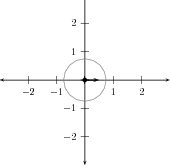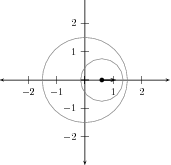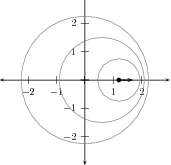| << Chapter < Page | Chapter >> Page > |
Have you noticed how the pitch of a police car siren changes as the car passes by or how the pitch of a radio box on the pavement changes as you drive by? This effect is known as the Doppler Effect and will be studied in this chapter.
As seen in the introduction, there are two situations which lead to the Doppler Effect:
The Doppler effect is the apparent change in frequency and wavelength of a wave when the observer and the source of the wave move relative to each other.
We experience the Doppler effect quite often in our lives, without realising that it is science taking place. The changing sound of a taxi hooter or ambulance as it drives past are examples of this as you have seen in the introduction.
The question is how does the Doppler effect take place. Let us consider a source of sound waves with a constant frequency and amplitude. The sound waves can be drawn as concentric circles where each circle represents another wavefront, like in [link] below.

The sound source is the dot in the middle and is stationary. For the Doppler effect to take place, the source must be moving relative to the observer. Let's consider the following situation: The source (dot) emits one peak (represented by a circle) that moves away from the source at the same rate in all directions. The distance between the peaks represents the wavelength of the sound. The closer together the peaks, the higher the frequency (or pitch) of the sound.

As this peak moves away, the source also moves and then emits the second peak. Now the two circles are not concentric any more, but on the one side they are closer together and on the other side they are further apart. This is shown in the next diagram.

If the source continues moving at the same speed in the same direction (i.e. with the same velocity which you will learn moreabout later), then the distance between peaks on the right of the source is constant. The distance between peaks on the left isalso constant but they are different on the left and right.

This means that the time between peaks on the right is less so thefrequency is higher. It is higher than on the left and higher than if the source were not moving at all.
On the left hand side the peaks are further apart than on the right and further apart than if the source were at rest - this means thefrequency is lower.
When a car appoaches you, the sound waves that reach you have a shorter wavelength and a higher frequency. You hear a higher sound. When the car moves away from you, the sound waves that reach you have a longer wavelength and lower frequency. You hear a lower sound.

Notification Switch
Would you like to follow the 'Siyavula textbooks: grade 12 physical science' conversation and receive update notifications?